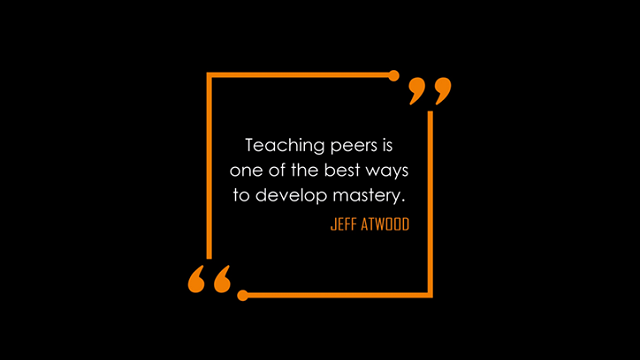In today’s scenario, with the developing times, the way of teaching and learning has also been modified.
Now, we are adopting various frameworks and structures to educate the Alpha generation (i.e. the current generation born between the years 2010 till 2024).
Peer learning is a potentially powerful way of sharing knowledge about the subject matter. It is usually done when the learning objectives are clear. Learning could be best facilitated when peers do things together, regularly reflecting on what they are learning. It is a process where students learn from and with each other in both formal and informal ways. We can also define it as a two-way process where both the peers learn something new from and with each other.
It involves various forms of activities such as role-play, creating a reward system, filling knowledge gaps etc., which are adopted to ensure successful learning. It is a process where senior and junior students or students from the same year form partnerships to assist each other with the course content and their personal concerns. In short, it helps build students’ organizational and interpersonal skills.
A lot of times, peer learning takes place in an informal set-up where students learn a great deal by explaining their ideas to others or participating in activities that broaden their horizons in learning from their peers. This mutual feedback and self-evaluation help students at an early age to blossom. Hence, it can be seen that the students in the learning process play an active role. When students play an active role, it creates a sense of enthusiasm, motivates and builds confidence in the student as they both gain a deeper knowledge of the subject.
There are various types of peer learning techniques, such as peer interaction, peer response, peer collaboration, peer feedback, peer facilitation etc. it is important to understand which type to be used to achieve the objectives of teaching. Usually, it is a targeted process where a specific group of students are taken up for the learning process. Peer learning is no magic; it all depends upon the objectives to be attained, and the tools used to attain the goals. Many researches were conducted to identify common stages used in the peer learning process.
A pre foundational stage is important to understand the scope and the kind of value to be added to the subject being targeted. The second stage is to establish a foundational engagement, i.e. understanding what tools to adopt to get things right on track. The third stage would involve understanding how to keep peers engaged in the process and in the end, how to achieve the learning outcomes. The learning outcomes could be achieved when it is clear what kind of learning method will be adopted by the educator.
Research indicates that peer learning activities typically yield the following results for both tutor and tutee:
- Team-building spirit and more supportive relationships;
- Greater psychological well-being,
- Social competence,
- Communication skills and self-esteem; and
- Greater productivity in terms of enhanced learning outcomes.
In the Covid-19 scenarios, the way of teaching-learning has changed. Everything has come on the online/Blended mode whereby peer learning techniques are encouraged. Few Institutions like GITAM University have already adopted this new era of learning models by implementing blended learning into their curricula practices. This technique would indeed be fruitful in forming a strong foundation for future jobs, prioritizing collaboration and communication skills above all other soft skills. Peer learning through technology-enabled tools helps students to develop a better understanding of technology. It will indeed lead to creating skilled individuals who would be an asset to their organizations. Social presence (peers) has a vital role in cognition. Hence the author invites the noble teaching fraternity to embrace and promote peer learning in their classrooms.
